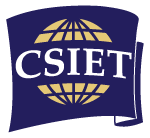Certification Process Frequently Asked Questions
Certification Process FAQ
1. What is the difference between Membership and Certification?
CSIET membership does not guarantee a certification with CSIET, but rather an organization must be a paid CSIET member in order to apply to be evaluated for CSIET certification. CSIET membership is based on an annual cycle (July 1 to June 30) which means the dues associated with membership must be paid each year. Similarly, CSIET conducts the evaluation process annually as well, which begins in November and ends in February of the following year. Only U.S.-based schools or organizations are eligible to seek listing and must be members of the Voting Exchange Program or School/District Membership categories.
2. Can a program/school be a member, but not seek certification?
A program/school can be a member and receive the listed membership benefits. However, they will not have their program appear in the Advisory List and cannot state that they are listed members with CSIET unless they pass the evaluation process.
3. What does 'CSIET Certification' mean?
CSIET Certification means that an international student exchange program has been evaluated by CSIET for compliance with CSIET Standards. In order to be a listed member, organizations must submit an application to CSIET’s evaluation process.
4. How do we apply for certification?
- Fill out and submit an application
- For J-1 programs, hire a CPA to review your program’s financial documents and submit a CPA Statement of Financial Viability
- For F-1, and Outbound programs, hire an external CPA to conduct a compliance audit on your program, based on the appropriate audit template
5. What information is needed?
- Contact Information
- Number of students per state served
- Number of students per country served
- CPA Statement of Financial Viability
- Signed statement regarding commitment to CSIET Standards
6. Can we apply for certification if we are not members?
7. Why should we apply for certification? What is the added benefit?
When a program applies for listing and passes the evaluation process, they appear with their description and contact information in the Advisory List for the coming academic year and are “Listed Members” of CSIET, or in other words, “CSIET-certified.” The program will receive a CSIET logo and will appear in search results within CSIET’s Program Finder, which is used by students, schools, and host families looking for a safe and valuable student exchange program.The acceptance of the student is entirely at the discretion of the school or district
8. Can we apply for certification if we do not currently have students on the ground?
9. How long does the process take?
10. What does the process entail?
- Application for Certification
-
Program Evaluation (J-1 programs must meet listing requirements) F-1, and Outbound programs must:
-
Apply for listing;
- Contract a CPA;
- Have the CPA conduct a compliance audit based on CSIET’s audit template;
- CSIET Staff evaluates applicant programs;
- CSIET Staff and Board accredit programs and issue listing certificates/letters/logos;
- Approved programs are promoted on the CSIET website through our Advisory List Program Finder and in the Advisory List;
11. What are the standards?
12. What is a compliance audit?
A compliance audit is different from a financial audit in that it measures compliance against an accepted set of standards and practices. An external auditor takes a representative, valid # of sample files and tests those files for compliance with the given standard. Compliance is often proven through relevant documentation and student/host family files.
13. What is a CPA Statement of Financial Viability?
A CPA Statement of Financial Viability is a statement from a CPA acknowledging the status of a program’s current financial position.
14. Can we use our internal CPA to conduct the audit?
15. What if we do not meet all the criteria?
16. If we do not pass the audit, do we get a refund?
17. What does Inbound vs Outbound in the certification categories mean?
18. What are the differences between F-1 and J-1 Organizations?
J-1 organizations are sponsor organizations that are designated by the U.S. Department of State and can issue the DS-2019, the form used to apply for a J-1 visa. F-1 organizations work as a third party to place students at an I-20 certified school. F-1 exchange organizations are not authorized to issue the I-20 form. Only U.S. based educational institutions can issue the I-20. To learn more, please refer to CSIET’s press release on J-1 vs. F-1 programs.
19. How do I know if my school is eligible to be come CSIET-certified?
All schools that are SEVIS-certified and issue the Form I-20 are eligible to apply.
